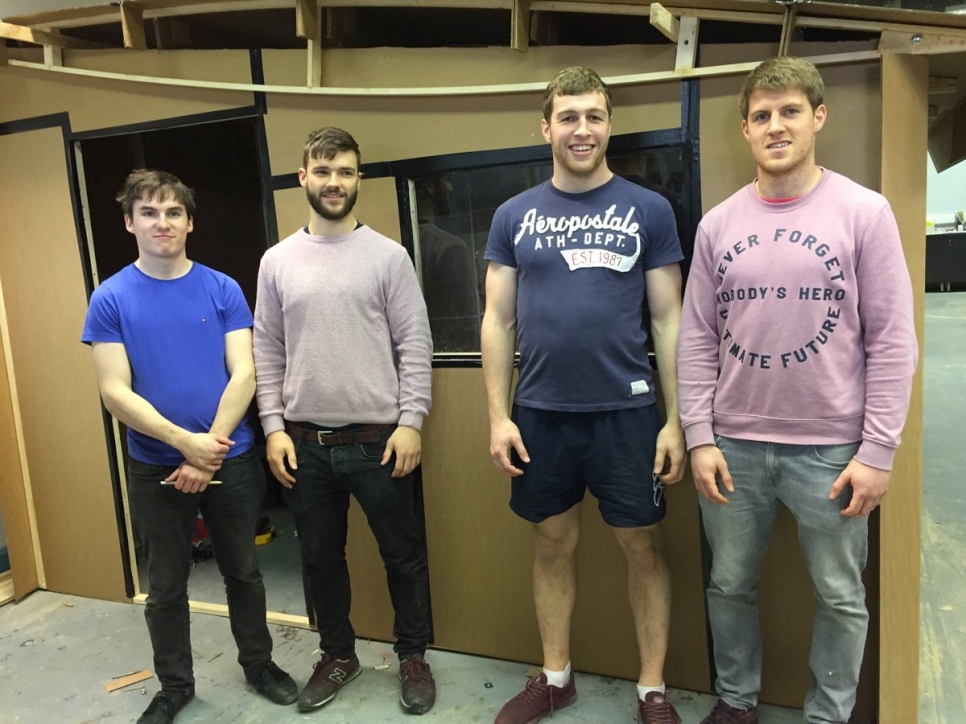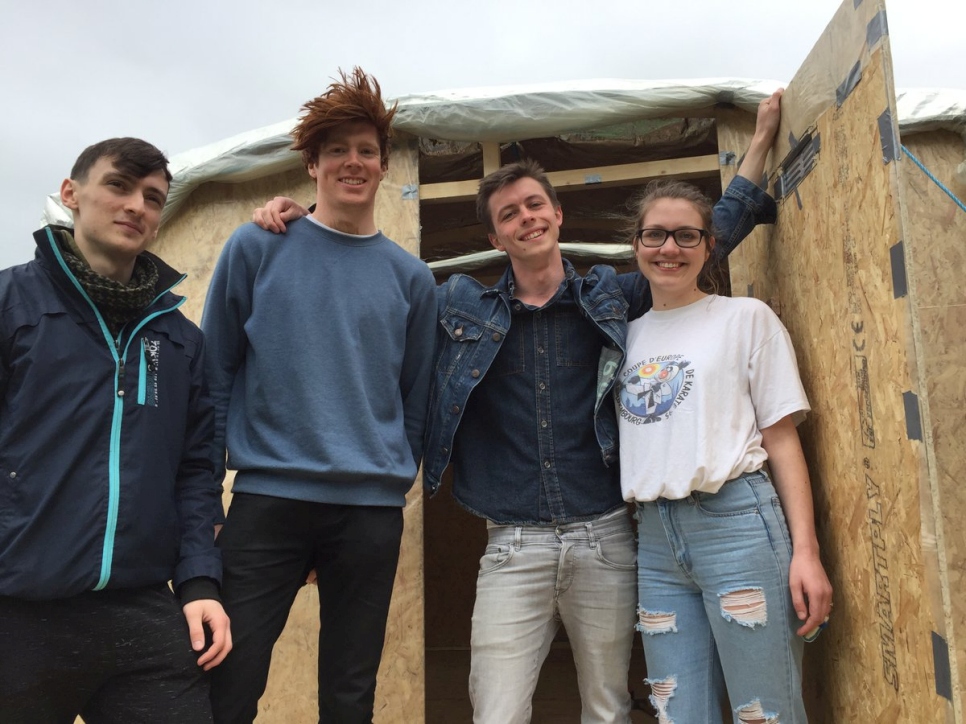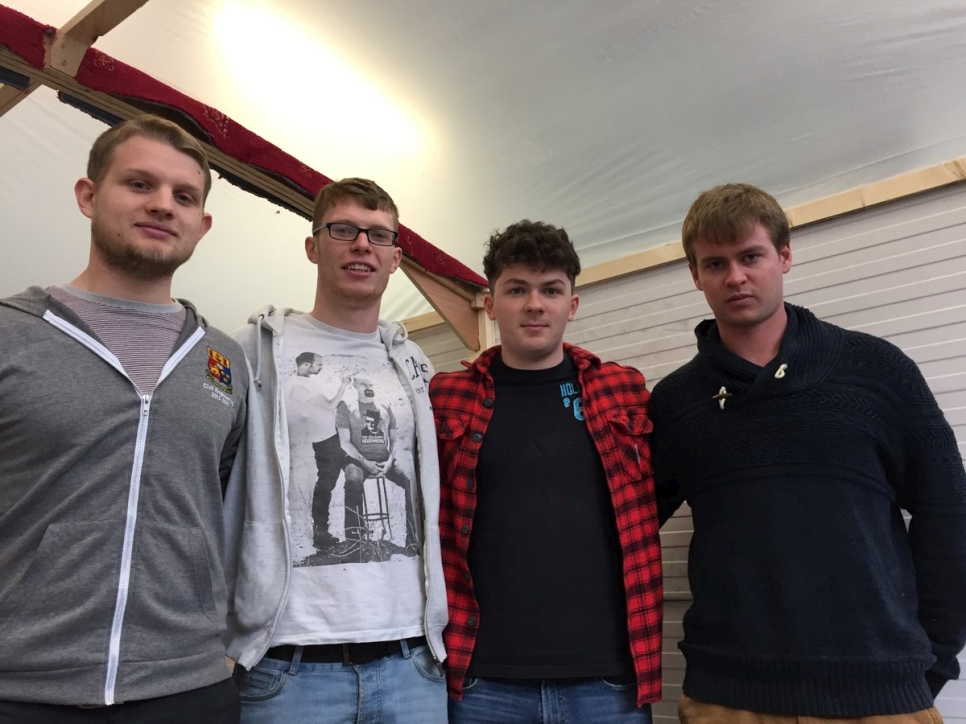UCC students build shelters for refugees and displaced persons

University College Cork civil engineering students alongside their extendable pod design. © Jody Clarke
Walls made of cardboard, roofs unrolled like cling film and interlocking pods that can expand or contract depending on how many people they need to accommodate.
These are some of the ideas put in to practice by civil engineering students at University College Cork, who have designed and built shelters for refugees and displaced persons.
Working under the mentorship of Akiboye Connolly Architects, the students designed their shelters following briefings from UNHCR and architect Grainne Hassett, who worked in the Calais camp in France.
“This is a real hands on project” says Dr Denis Kelliher, a lecturer in the Department of Civil and Environmental Engineering. His department and Akiboye Connolly Architects asked students to use their skills to respond to real life issues, and nothing seemed as relevant today as the refugee crisis.
“That makes it of big benefit to the students, who are following through from design to the actual construction and procurement of materials.”
Kevin O’Dwyer was part of a team that designed and built two interlocking pods. Two doors at both ends allow the shelter to be extended simply by connecting them to one another.
“You could have a row of pods all connected to one another depending on how far you need to extend it,” he says. What’s more, they can be taken apart again, and stored as flat packs, allowing for ease of storage. Four walls and two roof parts can be taken apart and stacked on top of one another in a relatively small storage space, thus meeting one of the projects core objectives.
“The aim of the project is to emulate real life and practical solving of problems relevant to today’s world,” says Simon Connolly of Akiboye Connolly. “We encourage the students to “think on their feet”, working through a full design and construction process in teams, as they will in professional practice, and develop a good understanding of working with real materials at full size.”
Their original thinking impressed the team, says his partner Caroline Akiboye, who also says they wanted to raise awareness of the global debate on the issue of habitation and displacement.
"Their inventiveness in coming up with unconventional solutions impressed us, as well as their commitment to understanding the human problems they can tackle as engineers."
"We wanted a shelter that was solid but was also a nice home for people"
After designing a raised floor, Shane Fleming and his team wanted to design a shelter that was more like a house than a temporary construction. They incorporated a porch, so that people could sit outside and not have to stay indoors all the time.
“We wanted a shelter that was solid but was also a nice home for people” he says, pointing to a polythene roof. "It’s actually quite bright now even with the door closed," says Isabel Quinn, who worked with four others on the design and final construction of the shelter.
Having a place called home was a concern for all groups, who said that taking part in the project was a reminder of the trials that people have to endure when seeking safety.
“It just makes you appreciate what you have that you take for granted,” says Liam Jackson, who worked with four others on a pre-insulated shelter that could be constructed in 40 minutes.
“When you start realizing that people don’t have a roof above their heads, you begin to look more closely at what actually need to just survive.”



